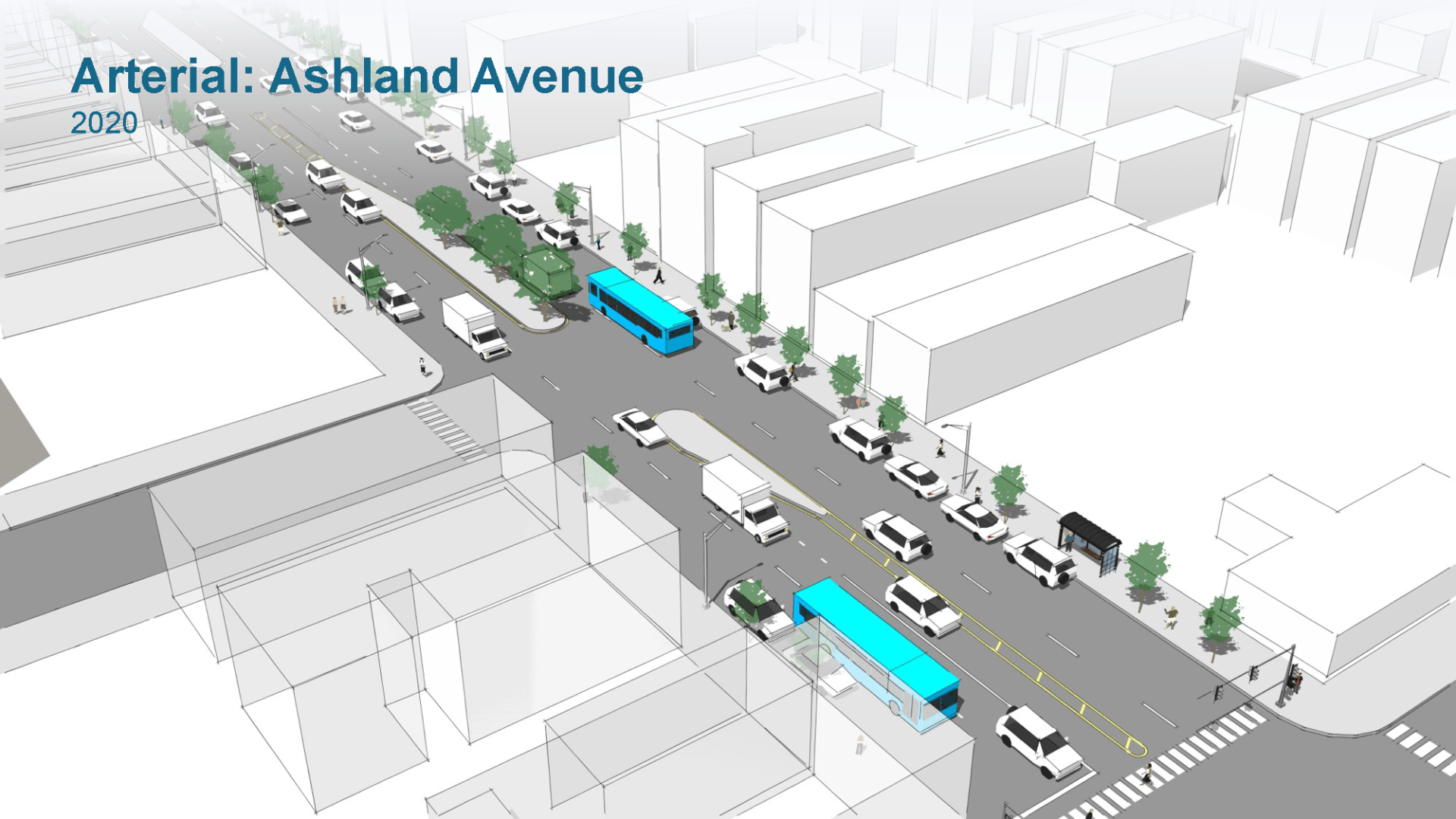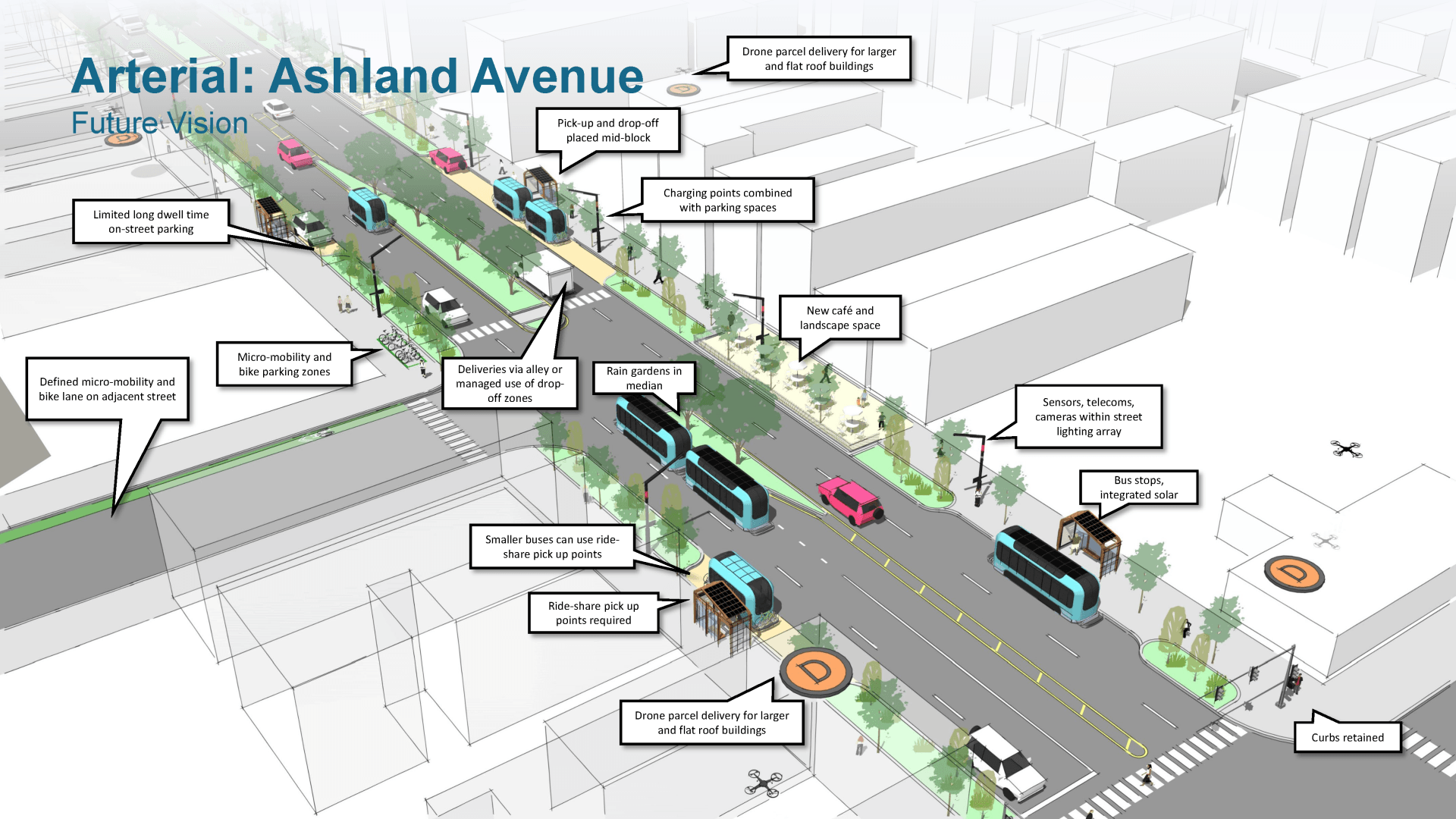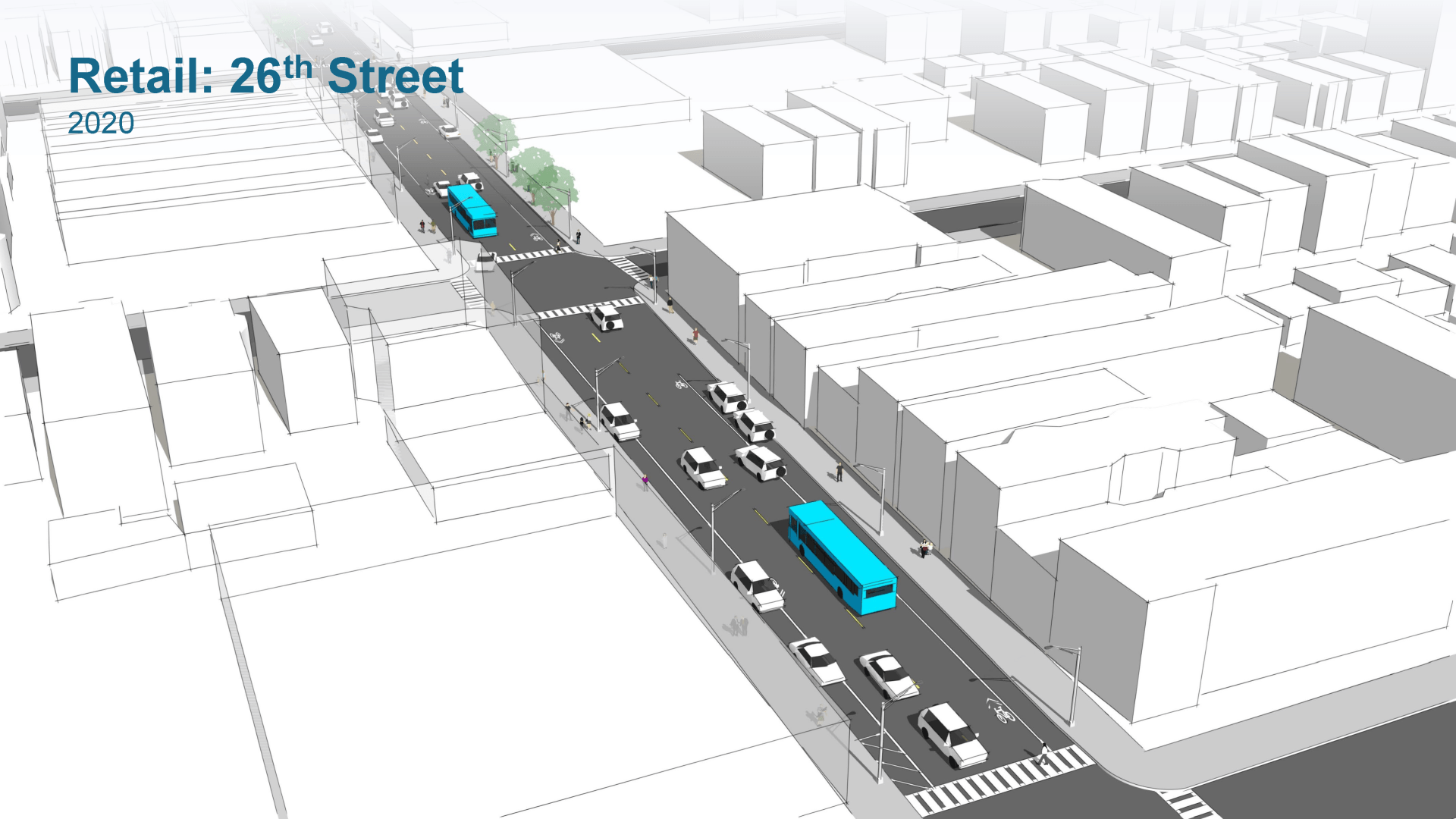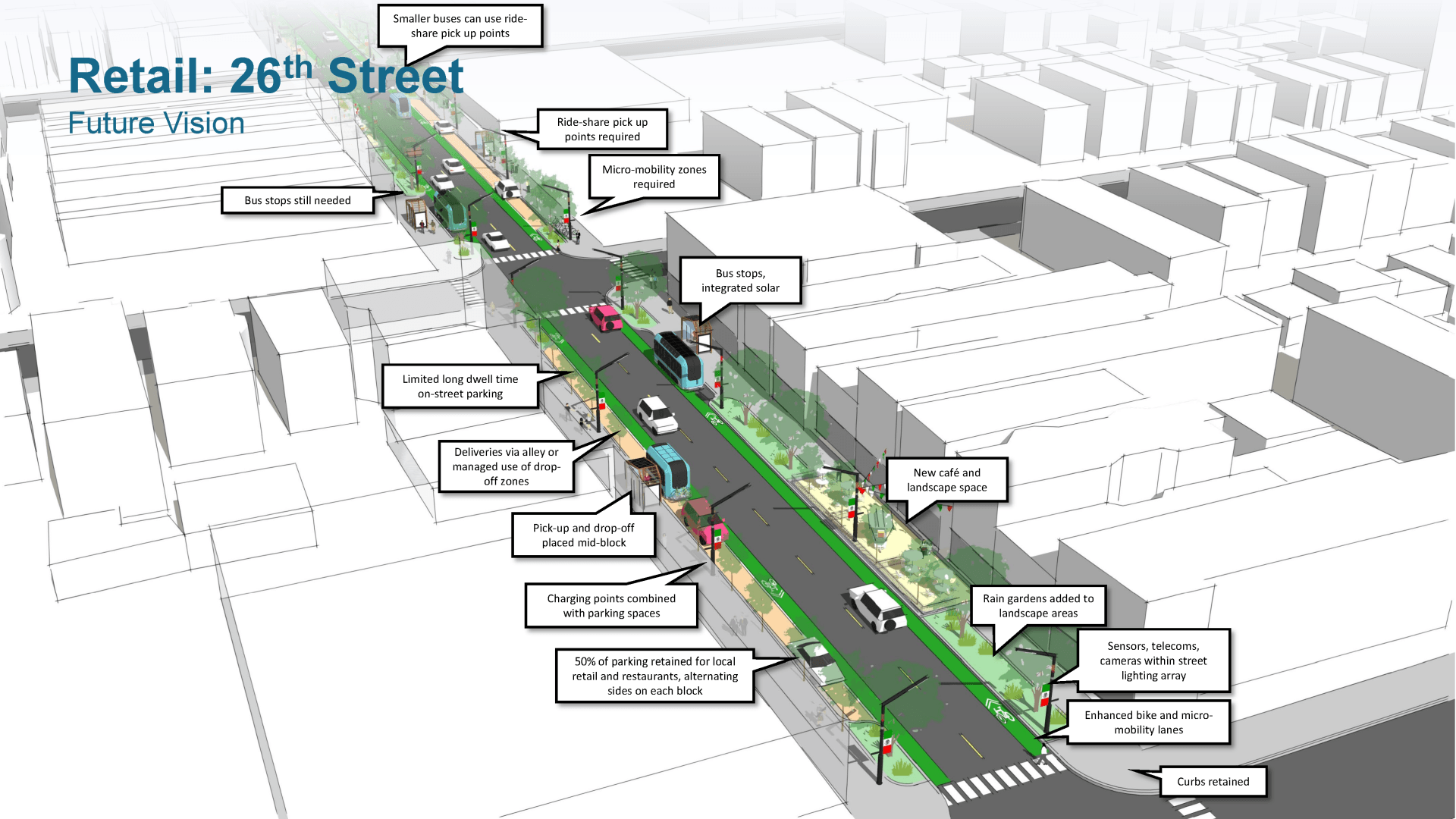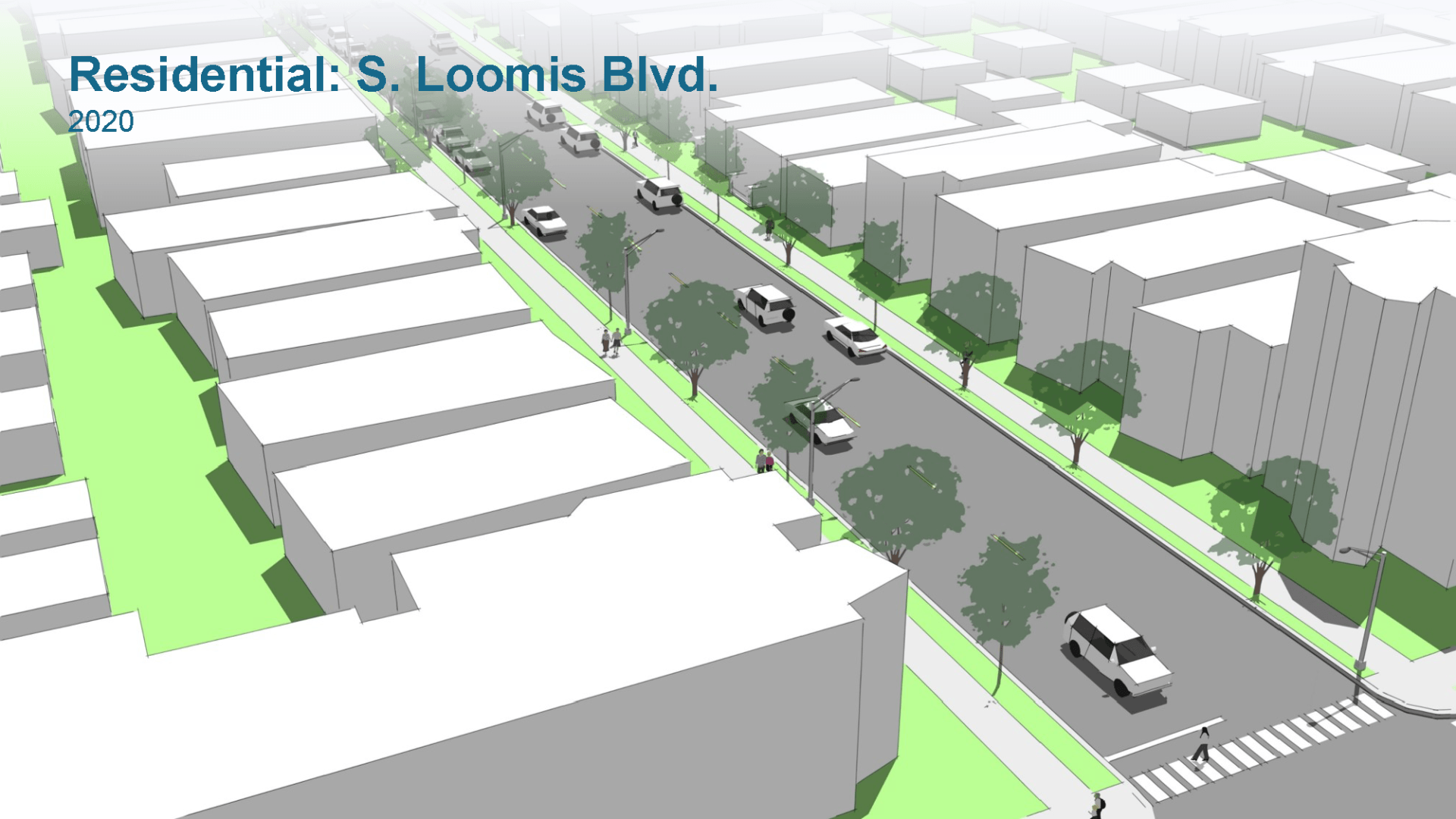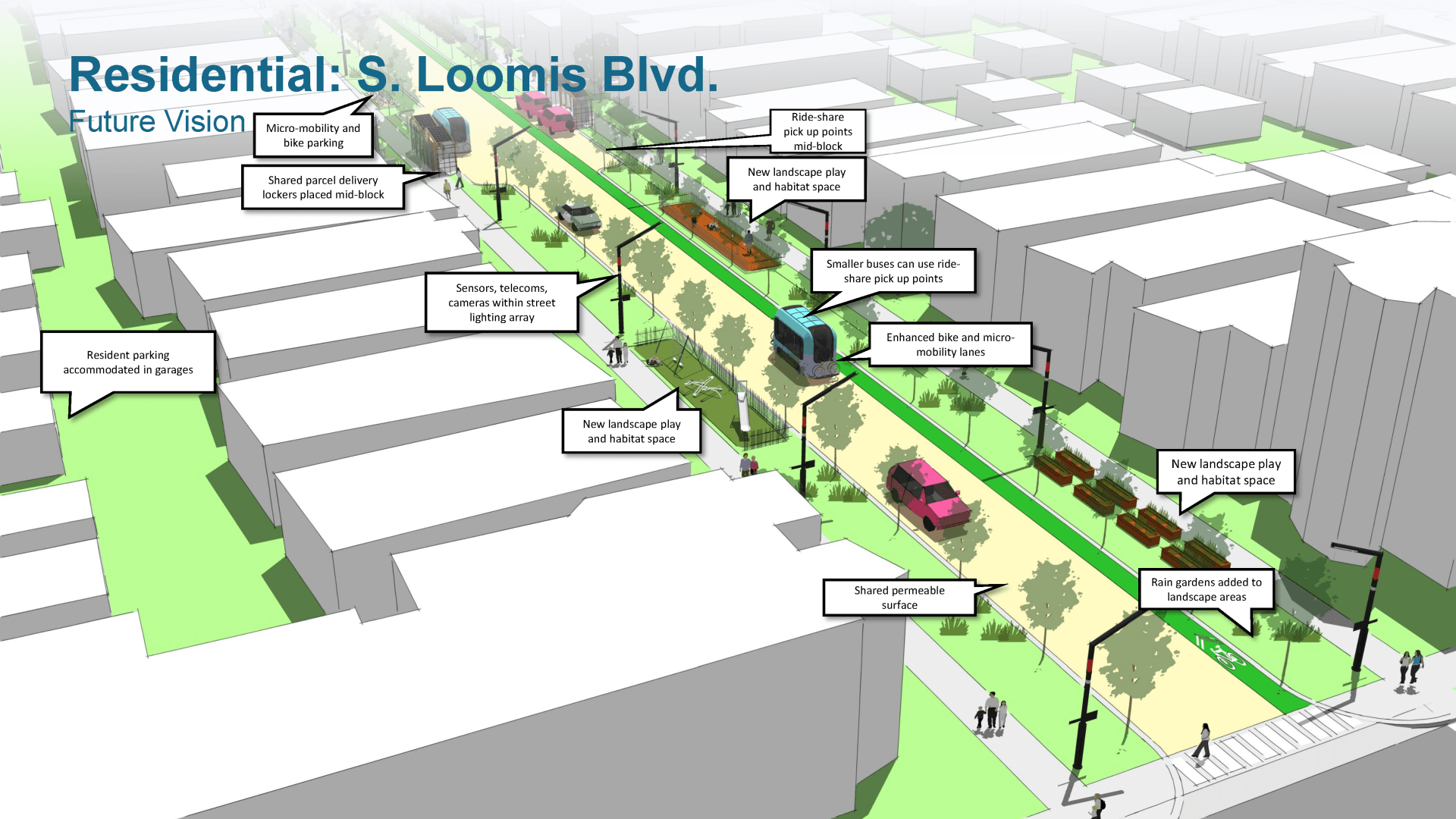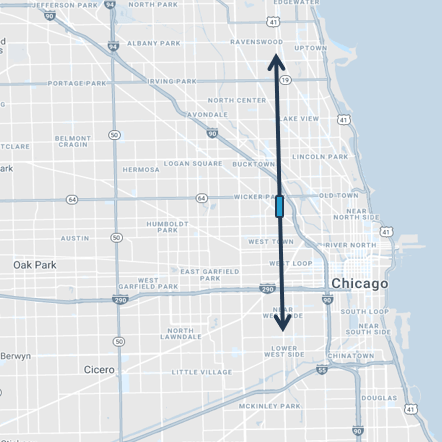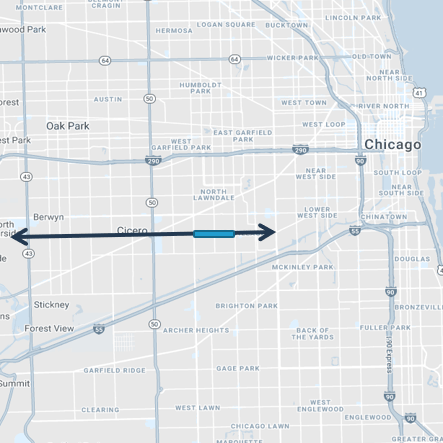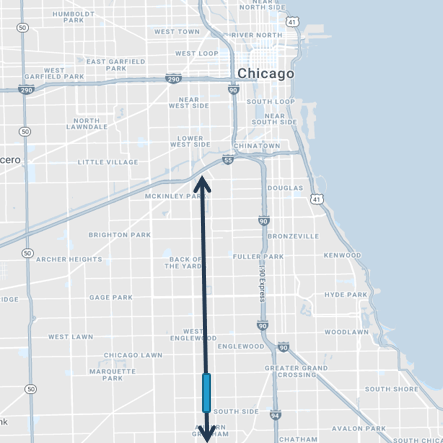Case Study: Streets of the Future
What will our streets look like in the next 10 to 30 years? We are entering a new era of mobility – and our streets will need to adapt to future changes. There are shifting patterns in where and when we travel, and we demand more from our streets every day. For new cities and urban districts, a blank canvas approach can be taken to designing new streets. Cities such as Chicago, on the other hand, are mature cities with an established structure and fabric.
City Tech Collaborative
and Skidmore, Owings & Merrill
gathered mobility and technology experts in Fall 2019 to explore concepts of future street typologies that reflect emerging mobility trends, technologies, and behaviors. Using Chicago as a case study, the results are prototypical designs that illustrate technology-supported strategies that could be deployed throughout the city while maintaining the integrity, functionality, and expectations of the city’s character.
This design exploration builds on City Tech's Advanced Mobility Initiative to create a more seamless mobility system with increased reach and accessibility for residents.
List of Services
-
Read More: Designing Chicago's Streets of the Future
Skidmore, Owings & Merrill detail the thought process behind SOM's collaboration with City Tech on "Chicago's Streets of the Future."
-
Read More: Architectural Record
Our work is highlighted among other ideas to increase cities' resilience in Architectural Record.
-
Read More: American City & County
City Tech's Kate Calabra and SOM's Chris Hall detail how to retrofit our streets to be safer, more resilient, and more responsive in American City & County.
Explore Chicago's Streets of the Future
Arterial Street: Ashland Avenuefrom North to Division
Ashland Avenue is an arterial street in Chicago that currently features a 100-foot right-of-way, 7 lanes (4 travel, 1 turn, and 2 parking), a planted median, bus service, and no bike infrastructure. This stretch of Ashland represents a combination of retail, business, and residential corridors.
